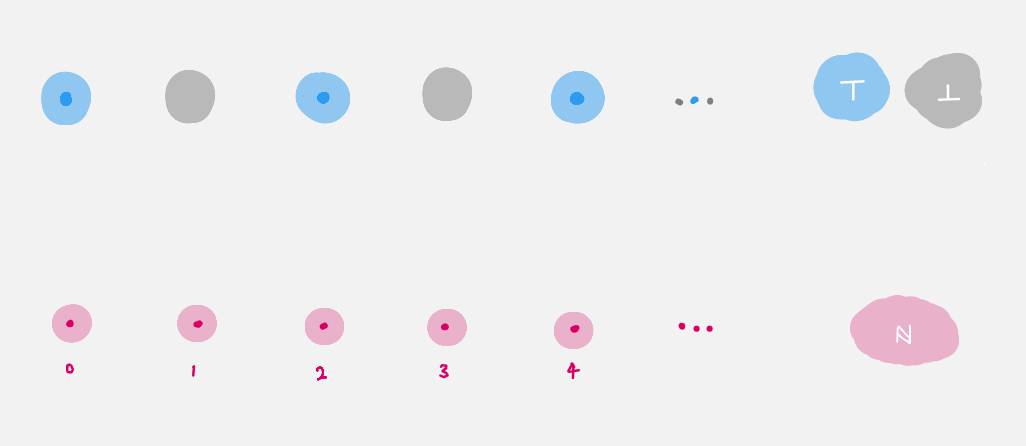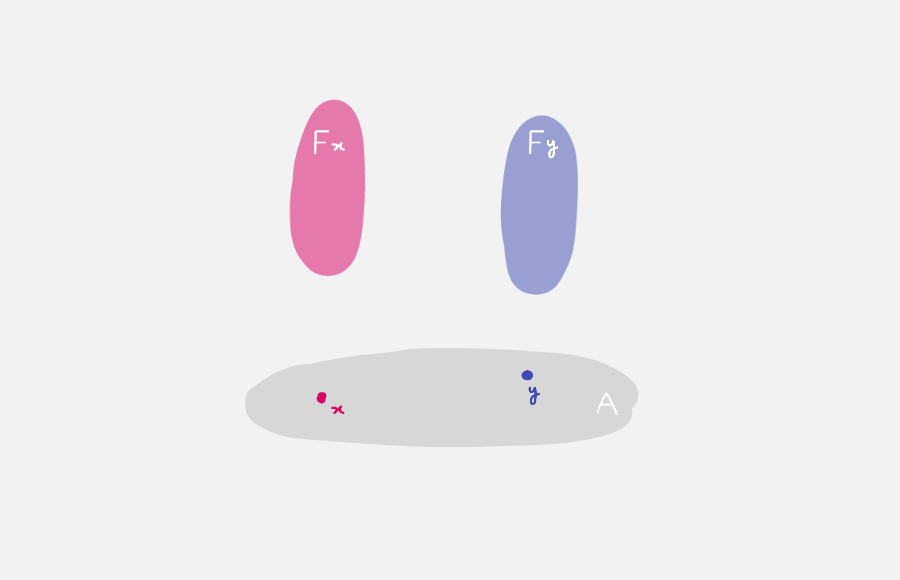Quest 1 - Dependent Types
In a “place to do maths” we would like to be able to express and “prove” the statement
The statement
There exists a natural that is even.
The goal of this quest is to define what it means for a natural to be even.
Part 0 - Predicates / Dependent Constructions / Bundles
This requires the notion of a predicate.
In general a predicate on a type A : Type is
a term of type A → Type.
For example,
isEven : ℕ → Type
isEven n = ?
Do
C-c C-lto load the file.Navigate to the hole.
Input
nin the hole and doC-c C-c. You should now seeisEven : ℕ → Type isEven zero = {!!} isEven (suc n) = {!!}
It says “to define a function on
ℕ, it suffices to define the function on the cases,zeroandsuc n, since these are the only constructors given in the definition ofℕ”. This has the following interpretations :propositionally, this is the principle of mathematical induction.
categorically, this is the universal property of a natural numbers object.
Navigate to the first hole and check the goal. You should see
Goal: Type ———————————
Fill the hole with
⊤, since we wantzeroto be even.Navigate to the second hole.
Input
nand doC-c C-cagain. You should now seeisEven : ℕ → Type isEven zero = ⊤ isEven (suc zero) = {!!} isEven (suc (suc n)) = {!!}
We have just used induction again.
Navigate to the first hole and check the goal.
agdashould be asking for a term of typeType, so fill the hole with⊥, since we don”t wantsuc zeroto be even.Navigate to the next hole and check the goal. You should see in the
*Agda information*window,Goal: Type —————————————— n : ℕ
We are in the “inductive step”, so we have access to the previous natural number.
Fill the hole with
isEven n, since we wantsuc (suc n)to be even precisely whennis even. The reason we have access to the termisEven nis again because we are in the “inductive step”.There should now be nothing in the
*Agda information*window. This means everything is working. (Compare yourisEvenwith our solutions inQuest2Solutions.agda.)
Part 1 - Interpretations of Bundles
The interpretations of isEven : ℕ → Type are
Propositionally : Already mentioned,
isEvenis a predicate onℕ.As a construction :
isEvenis a dependent construction. Specifically,isEven nis either⊤or⊥depending onn : ℕ.Geometrically : seen as a map from the space
ℕto the space of spacesType,isEvenassigns for every pointninℕa spaceisEven n. Pictorially, it looks like
We say
isEvenis a bundle of spaces overℕ, or simply a bundle overℕfor short. The spaceisEven nlying above eachnis called the fiber overn. In this particular example the fibers are either empty or singleton.Note
In the above picture, we have implicitly drawn
ℕas a bunch of “disconnected” points, i.e. a discrete space. See a later arc where this is justified.Categorically :
isEvenis an object in the over-categoryType↓ℕ.
In general given a type A : Type,
a dependent type F over A is a term F : A → Type.
This should be drawn as a collection of space parameterised
by the space A.

You can check if 2 is even by asking agda to “reduce” the term isEven 2
(do C-c C-n, “n” for normalize) and type in isEven 2.
(You can write in numerals since we are now secretly
using ℕ from the cubical agda library.)
Part 2 - Using the Trinitarianism
We introduced new ideas through each perspectives, as each has their own advantage
Types as propositions is often the most familiar perspective, and hence can offer guidance for the other two perspectives. However the current mathematical paradigm uses “proof irrelevance” (two proofs of the same proposition are always “the same”), which is not compatible with HoTT. We will expand on this later.
Types as constructions conveys the way in which “data” is important, and should be preserved.
Types as objects/spaces allows us to draw pictures, thus guiding us through the syntax with geometric intuition.
For each new idea introduced, make sure to justify it proof theoretically, type theoretically and categorically/geometrically.